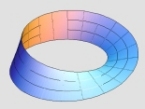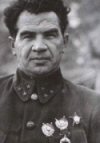Yoozernamemember
Posts: 20
Joined: 4/29/2011
Status: offline

|
An interesting report:
quote:
Ref. ¹ 632/3
11/IX-44 y.
Report of spec.lab. NKV ¹ 101-1 on theme:
Examination of hitting features of T-34 tank fuel tanks with armor-piercing/high-explosive and cumulative (armor-burning){HEAT} shells of german fascist army.
Resp. executors: Rozov, Kaminsky, Shchurov
Superviser: Sarafanov
1. History of question
In the battles of spring-summer 1943 tank army, tank corps and tank brigades commanders begin to note that cases of T-34 tanks combat losses with catastrophic explosions of fuel tanks or fire in engine compartment became more frequent. For instance, cases of burn T-34 tanks in battles of summer 1943 near Kursk exceeded those of T-70 tanks by 4-9%...
By order of chief of BTU GBTU of Red Army engeneer-colonel Afonin, 11 Sept. 1943 a comission was formed to study this problem.
Our group studied possibilities of T-34 fuel tank explosion with various armor-piercing tools and valuation of its probable impact on crew and inner equipment.
2. Target setting
Comission's survey of 72 destroyed during Kursk battle tanks on SPAM {field repair} bases have shown that most of them (68%) were destroyed by fire originated in result of fuel tank depressurization with subconcious inflammation of diesel fuel.
All mentiond tanks have breach in hull side or underskirt by AP, armor-burning shells or field charge.
About 1/3 abovementioned tanks lack one or two front fuel tanks and have demolition inside or partial, or even complete destruction of hull's welded seams, caused by internal explosion.
Only little part (8%) of tanks have signs of inner explosion with singns of flames, whereas 24% of machines were destroyed with explosion without any signs of iner flames. Often even ordinance was completely unharmed in chest. According given order our group researched this particular type of destruction - fuel tank explosion.
Members of comission engeneer-colonel Gurov and MVTU associate professor Krutov assumed after inspection of exploded tanks that given damage was caused by explosion of front fuel tanks placed inside crew compartment of T-34 after impact of some specific german ammunition.
Engeneer-major Firsov expressed opinion that such explosion could happen in result of burst of high temperature ammunition based on thermite or electron {aluminium or alloy powder and mixed with rust}
Group of com. Sarafanov recieved a task personally from chief of GBTU to explore the possibility of T-34 fuel tanks detonation after hit by various types of armor-piercing ammunition of german fascist army
{part missing}
4. Study equipment.
To verify assumtions of coms. Gurov, Firsov and Krutov, three sections layouts of 35 mm thick armoured steel with 135 l. {35 gallons} fuel tank established inside were built by NII-48 and Uralmashzavod. Also according to cover letter ¹ 312-a from 21.IV-44 y. a T-34 hull with turret and equipment but without weapons was put to testing ground by BTU.
{part missing again}
5. Experimenting on location.
First shelling of layouts was on 12/XII-43y. from ballistic cannon m.40 from 30 meters distance.
1. During the test fuel tank was full of diesel fuel, recieved by cover letter of com. Afonin from 5/XII. Total spent 8 m.38 shells, 5 m.39/40 shells and 5 armor-burning shells. The results are the following:
During tests fuel tank was completely destroyed 3 times, diesel fuel was flamed 4 times. Explosions were not recorded.
When the fuel tank was hit by fragments of m39/40 shell they were abruptly dragged. Many of fragments did not break through.
Conclusions: 100% filled fuel tank of T-34 tank cannot be a source to inner explosion of T-34 tank, but even serves a protection from fragments of armor and cores of m.39/40 shells. {Guess it's the exact meaning of these fuel tanks}
2. Since com. Krutov expected that petrol cannot explode either if tank is full, with com. Fedin sanction a tank of petrol was installed into section. 3 shots was fired with m.38 shell and one armor-burning. Explosions were not recorded, in 2 tests petrol flamed.
Second stage of trials was began 9/II-44y. For trials the same weapons were used with addition of 88mm recoilless cannon m.1943, firing 88mm armour-burning mines.
According to trials program partially filled tanks were tested. Prior to the test shootings the tank was carried on a truck for 1-2 hours on service roads on testing area. After that fuel was poured off according to test conditions and tank was being installed on layout.
4th series of shooting. Tanks filled to 10-25%. Tank exploding from hit of coherent jet being filled to 25% or less. Equivalent bursting power was near 30-50 gramms of trotyl. The hatch cover on roof of layout made to lift off the tanks was smashed out. In case of filling with petrol explosiveness reducing on avearge 1.5 times comparing to diesel fuel. Fuel tank detonation caused hatch cover to open. Welded seams of layout remained intact.
Another picture is observed when inside almost empty tank a high explosive part of 75mm armor-piercing shell with red ring (80 gramms of trotyl with detonator of 20 gramms of phlegmatized tan{I don't know how to translate it, it seems to be acronym. Pretty sure some one of military or defence professionals would recognize it, but I' not} in aluminium cup) is bursting. In this case exploding effect of the shell is heavily (several times) increasing. Welded seams of underskirt was destroyed by explosion, after that shock wave ripped underskirt offand partly destroyed the roof of layout. Layout admitted off.
6. Conclusions:
The best ratio for detonation of T-34 fuel tank is when it's 10-15% full and AP shell m.38 bursting inside. Burst causes immediate detonation fuel's vapour which adds to shell's explosion, mmultiplying it by 2-4, which corresponds with effect of 105-122mm AP shell.
Even better summary effect is reached when domestic 76.2mm AP shell ÁÐ-350À which contains 150 grmms of trotyl bursts. Summary effect corresponds with 152mm AP shell ÁÐ-540Á type, which contains 400 gramms of trotyl.
With reducing caliber of AP shell probability of fuel tank explosion decreases dramatically. 37mm and 45mm AP shell cause almost non existing detonation. It should be noted that further increasing of AP caliber do not lead to significant increase explosive power of ammunition bursting inside the fuel tank. The presence of 75-85mm containing 50-100 gramms of trotyl or less amount of morre powerful blasting substances (for instance, 30-80 gramms of A-1X-2 mixture or 25-50 gramms of phligmatized gexogen) is optimal, The capacity of fuel tank should not be less than 100 litres. 30-50 litres do not make significant increasing of AP ammunition blasting power.
Countermeasures:
1. Do not allow placing of fuel tanks in crew compartment
2. During action spend the fuel from rear tanks first as their hit is less probable
3. Try to lessen accumulation of fuel vapour and formation fuel vapour of high concentration inside tank with constructing measures.
4. Lessen volume of fuel tanks inside crew compartment at least twice.
5. Place fuel tanks behind armoured leaktight wall
Rozanov {such as in document}
Kaminsky
Shchurov
Chief of the group Sarafanov
http://www.ww2f.com/weapons-technology-wwii/30582-t-34-crew-surivability-soviet-assessment.html
< Message edited by Yoozernamemember -- 5/3/2011 4:01:35 PM >
|
 Printable Version
Printable Version









 New Messages
New Messages No New Messages
No New Messages Hot Topic w/ New Messages
Hot Topic w/ New Messages Hot Topic w/o New Messages
Hot Topic w/o New Messages Locked w/ New Messages
Locked w/ New Messages Locked w/o New Messages
Locked w/o New Messages Post New Thread
Post New Thread